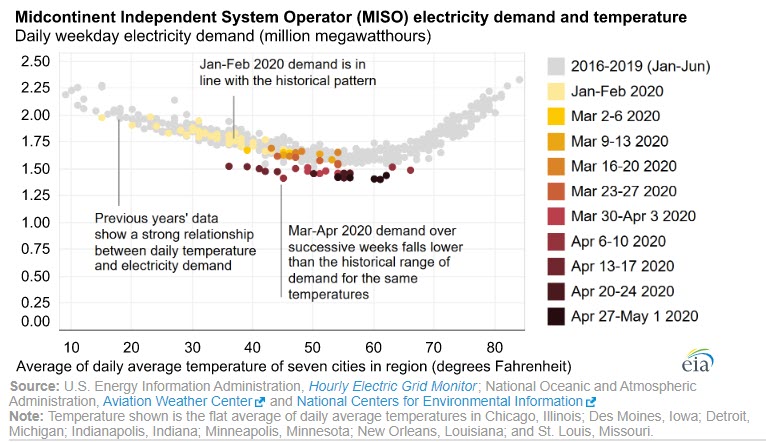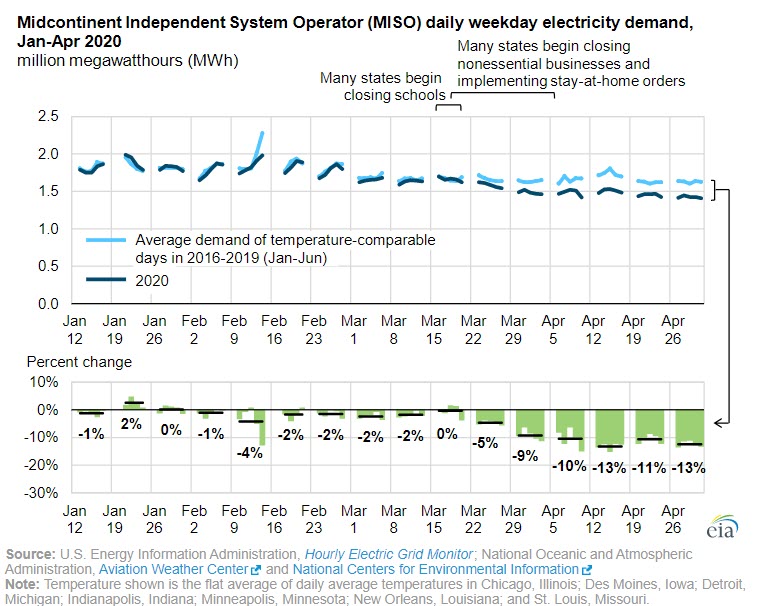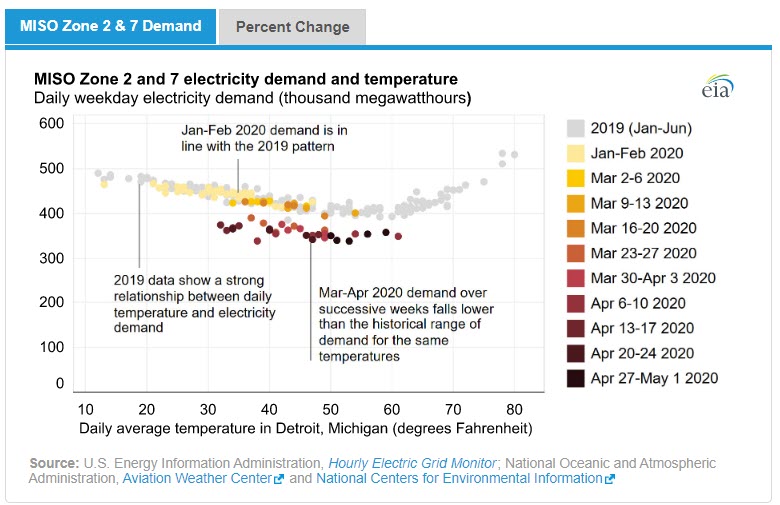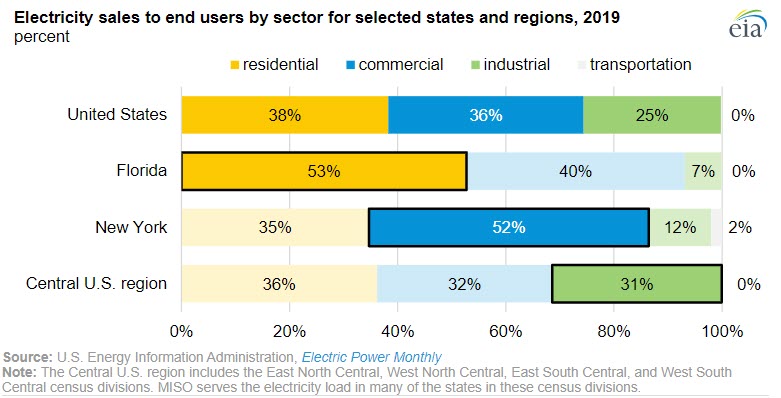EIA
Recent business shutdowns and changes to normal routines related to mitigation efforts for the 2019 novel coronavirus disease (COVID-19) have caused daily weekday electricity demand in the central region of the United States to decrease by 9%–13% in March and April compared with expected demand, after accounting for seasonal temperature changes. This decrease is similar to declines seen in New York. In contrast, other areas of the country, such as Florida, have not experienced significant changes, which may partly be caused by regional differences in how much electricity each end-use sector consumes and the varying effects of COVID-19 mitigation efforts on the sectors.

The U.S. Energy Information Administration’s (EIA) Hourly Electric Grid Monitor provides hourly electricity demand data from the 64 balancing authorities in the contiguous United States. Using these data, EIA compared the daily electricity demand of each weekday in 2020 through May 1 to the average demand of all weekdays with the same daily average temperature from January through June in 2016–2019. Weekends and holidays were excluded.

In the central portion of the country, the Midcontinent Independent System Operator (MISO) electric grid spans an area from Minnesota to Louisiana. MISO covers states with some of the highest proportions of electricity sales going to industrial sector end users. As states began taking steps to limit the spread of COVID-19 in mid-March, MISO daily weekday electricity demand began decreasing and averaged 9%–13% lower than temperature-comparable historical demand by late March through April.
[contextly_sidebar id=”3tF7uBLxWcKd77qndxzI8YMNiYFbo5Le”]

In MISO Zones 2 and 7, which cover most of Michigan and Wisconsin, demand has dropped slightly more than for MISO overall, averaging between 11%–16% from late March through April. On March 18, the three major car manufacturers based in Detroit, Michigan—Ford, General Motors, and Fiat Chrysler—announced they would begin closing their manufacturing facilities. Other industrial facilities have also temporarily closed. Unlike residential and commercial electricity demand, industrial users often consume large and stable quantities of electricity throughout the day.
In contrast with MISO, daily weekday electricity demand in Florida through April is on the lower range but has not diverged significantly from temperature-comparable historical demand.
Although school and business closings across the country have generally caused commercial and industrial electricity usage to decrease, stay-at-home orders have likely increased overall residential electricity usage. More than half of Florida’s electricity sales are to residential sector end users, the highest residential proportion in the nation. With little industrial electricity demand, increased residential electricity usage in Florida could be offsetting decreases in other sectors more so than in other regions.

Principal contributors: April Lee, Jonathan DeVilbiss





